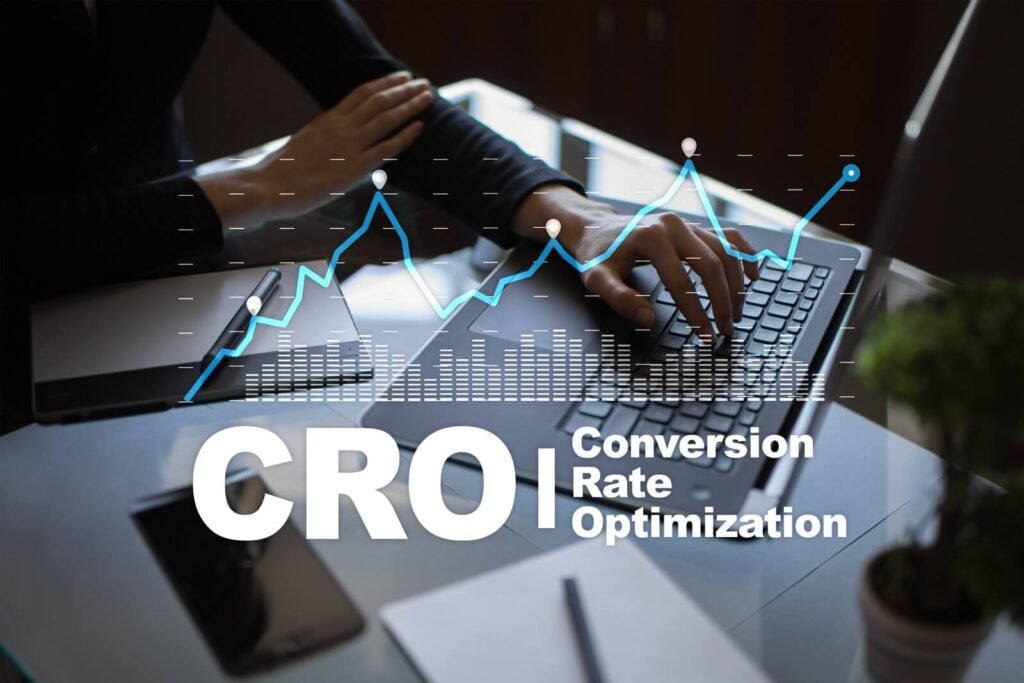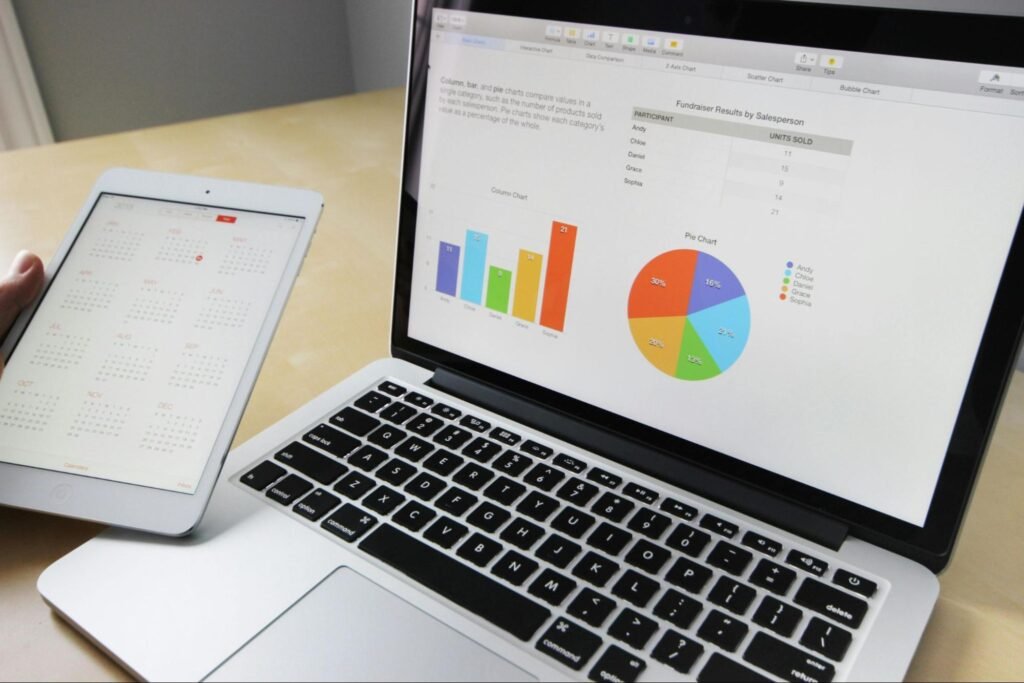In today’s dynamic digital landscape, our lives are intricately intertwined with the online realm. From the captivating targeted ads that seem to anticipate our every need to the insightful blog posts that we eagerly consume, there’s a mastermind orchestrating these experiences. Enter the world of digital marketing.
But what exactly does a digital marketer do? Their role transcends mere social media posts. They are the strategic architects of narratives, the analytical wizards deciphering data, and the innovative troubleshooters tackling challenges head-on. Navigating the ever-evolving digital terrain, they harness a plethora of tools to achieve specific marketing objectives, ensuring brands stay ahead in the digital race.
Amidst this bustling digital domain, one institution stands out as a beacon of excellence in grooming the next generation of digital marketers – the Ahmedabad School of Digital Marketing (ASDM). With its cutting-edge curriculum and industry-relevant training, ASDM equips aspiring marketers with the skills and knowledge needed to thrive in today’s competitive digital arena.
This blog post offers a captivating glimpse into the daily grind of a digital marketer. From crafting compelling content to unraveling the mysteries of search engine optimization (SEO) and mastering the art of social media engagement, we delve into the multifaceted realm of their responsibilities.
Whether you’re a budding entrepreneur seeking to decipher the intricacies of digital marketing or simply intrigued by the magic behind your favorite online experiences, this post is tailor-made for you. Get ready to embark on a journey of discovery and fascination as we unravel the complexities of the digital marketer’s world.
Moreover, in addition to their core tasks, digital marketers must remain vigilant of the latest trends and updates in the digital sphere. They must decipher how algorithmic shifts can impact visibility and engagement while meticulously analyzing data to measure campaign success and make necessary adjustments. Collaborating closely with teams such as sales and product development, ensure seamless alignment of marketing strategies with overarching company objectives.
In essence, a digital marketer resembles a conductor leading an orchestra, harmonizing various elements to create a symphony of success. They serve as the vital link between brands and audiences, ensuring the right message reaches the right people at the right time. So, the next time you encounter a targeted ad or dive into an insightful blog post, remember the skilled digital marketer toiling behind the scenes to curate that experience. Enjoy the journey!
The Content Creation Powerhouse: A Digital Marketer’s Pen

In the busy world of digital marketing, the role of a content creator is crucial. They are the ones who tell the stories, serve as the voice of the brand, and build engaging narratives that connect with the target audience. But being a “Content Creation Powerhouse” in a digital marketing workplace is not just about writing words. It involves a lot more:
Content creators need to be skilled in many different types of content. They need to be good at writing blog posts that are informative and engaging, which helps to establish the brand as a leader in its field and attract people to the website. They also need to create social media content that is short, catchy, and sparks conversations. This keeps the audience engaged on various platforms.
They also write clear and persuasive content for websites that guide users and encourage them to take action. They design targeted email sequences that help to build relationships with potential customers, promote products and services, and build loyalty to the brand. They also create landing pages that are designed to capture leads or drive sales with targeted messages and clear calls to action.
Great content doesn’t just appear out of nowhere. Digital marketers need to understand their audience’s needs and problems. This guides the creation of content, making sure it connects with the audience and addresses their specific questions or challenges.
But content isn’t just about captivating readers; it’s also about being visible to search engines. Digital marketers use relevant keywords and optimize the structure of the content to ensure it ranks well on search engine results pages. This increases the number of people visiting the website and brings potential customers to the brand.
Creating content isn’t a guessing game. Digital marketers look at website traffic, social media engagement, and other data to understand what content works best. This data guides their future content strategy, making sure resources are invested in topics that connect with the audience and achieve marketing goals.
Creating impactful content often involves teamwork. Digital marketers work with designers to create visually appealing content, with developers to ensure the content works well with the website, and with SEO specialists to optimize the content for search.
The digital landscape is always changing. A “Content Creation Powerhouse” stays updated on the latest content trends, explores new formats like video or interactive content, and adapts its strategies to stay relevant in the ever-changing online world.
Content shouldn’t exist in a vacuum. Digital marketers use analytics tools to track how well content is performing. They look at things like website traffic, lead generation, social media engagement, and conversions to understand which content works best and identify areas for improvement.
In essence, a Content Creation Powerhouse in digital marketing doesn’t just create content; they create a content strategy that increases brand awareness, engagement, and ultimately, conversions. They make digital marketing relatable and understandable to everyone, ensuring that every reader can connect with the content.
Demystifying SEO Optimization: A Digital Marketer’s Secret Weapon

In the vast world of the internet, websites are like shops on a busy street. If no one can find your shop, how will you get customers? That’s where SEO optimization comes in. It’s a key tool for digital marketers.
So, what is SEO Optimization? It’s a way to make a website appear higher in the list when someone searches for something on a search engine like Google. When a person types a question into Google, complex calculations decide which websites appear first. SEO optimization uses different methods to make your website more attractive to these calculations. This increases the visibility of your website and the number of visitors who find your website through search engines.
As a digital marketer, you’re like an architect building a website’s online presence through SEO. You might do things like keyword research, which is the foundation of SEO. You’ll look into what people are searching for online using special tools. It’s important to find relevant keywords that a lot of people are searching for but not many websites are using.
You might also work on on-page optimization. This is like dressing up your shop window to attract customers. It involves making the content and structure of your website’s pages relevant to your target keywords. This includes tasks like optimizing titles and meta descriptions, which are like your shop’s window signs. They need to be clear and concise and contain keywords to grab attention in search results.
You might also create high-quality, informative content that answers users’ search queries. This could be blog posts, product descriptions, or landing pages that are optimized with relevant keywords. You might also work on internal linking, which is like connecting departments in your shop. It involves creating a network of links within your website, helping search engines understand your website’s structure and navigate it efficiently.
Technical SEO is another important aspect. This is the behind-the-scenes work that ensures your website is strong. It involves optimizing the technical aspects of your website so that search engines can easily find and index it. This might involve tasks like optimizing website speed and ensuring your website is mobile-friendly.
The world of SEO is always changing, and the calculations used by search engines change often. As a digital marketer, you’ll need to stay updated on the latest trends and best practices to ensure your SEO strategies remain effective.
Effective SEO optimization is a long-term commitment. It takes time, effort, and ongoing monitoring to see results. However, the rewards are substantial. By consistently using these tactics, you can increase the number of visitors to your website, attract potential customers, and ultimately achieve your digital marketing goals. In essence, SEO optimization is not just about creating content; it’s about creating a strategy that increases brand awareness, engagement, and ultimately, conversions. It’s about making digital marketing relatable and understandable to everyone, ensuring that every reader can connect with the content.
Social Media Management: The Symphony Conductor of the Digital Marketer’s World

In the ever-changing world of digital marketing, managing social media is like conducting a symphony. It’s a key role that helps build awareness of your brand, create relationships, and engage with your audience. It’s a job that requires a digital marketer to take on many roles – like a conductor making sure every note of the brand’s social media symphony hits the right chord with the target audience.
So, what does managing social media involve? Well, it starts with curating content and planning when to post it. A good social media strategy isn’t just about promoting yourself. Digital marketers create a mix of content that grabs people’s attention. This could include eye-catching visuals like images, videos, and infographics, informative blog posts, news about the industry, polls, and even content created by users. They understand that each platform has its own unique preferences for content and they tailor their strategy to fit these.
Planning is crucial! Digital marketers create a social media calendar to schedule content in advance. This ensures a steady stream of posts across different platforms. The calendar helps maintain the voice and image of the brand and allows for adjustments based on how the audience engages and what topics are trending.
Social media is all about building relationships. Digital marketers actively engage with followers by responding to comments and messages quickly. They start conversations, answer questions, and address any concerns to build a loyal and interactive community around the brand.
Social media is a two-way street. Digital marketers use tools to listen to what’s being said about the brand, join in with industry conversations, and keep an eye on trending hashtags. This allows them to join in with relevant discussions, understand how people feel about the brand, and deal with any negative feedback quickly.
Encouraging user-generated content is a powerful strategy. Digital marketers run contests, encourage followers to share their experiences with the brand using specific hashtags, and acknowledge content created by users that fits with the brand image. This creates a sense of community and increases the reach of the brand.
The reach of organic posts on social media platforms can be limited. To get the brand message out there and target specific groups of people, digital marketers use social media advertising tools. They create targeted ad campaigns with clear goals (like increasing brand awareness, driving traffic to the website, or generating leads) and track how well they perform to improve future campaigns.
Numbers can tell a story. Digital marketers analyze social media analytics to understand what content works best with the audience, which platforms are driving the most engagement, and how effective their social media strategy is overall. They use these insights to refine their approach and get the most return on investment (ROI).
The social media landscape is always changing. Digital marketers stay updated on new trends, features on platforms, and popular content formats. They try out different approaches to see what works with their audience and adapt their strategies accordingly.
In conclusion, managing social media is a dynamic and multifaceted task. It requires a digital marketer to be a strategist for content, a manager for the community, an analyst for data, and a creative mind – all rolled into one. By mastering these skills, digital marketers can turn social media into a powerful tool for building the brand, engaging with the audience, and achieving marketing goals. In essence, managing social media isn’t just about creating content; it’s about creating a strategy that increases brand awareness, engagement, and ultimately, conversions. It’s about making digital marketing relatable and understandable to everyone, ensuring that every reader can connect with the content.
Diving Deeper: Email Marketing in the Digital Marketer’s Toolkit

Email marketing might seem like a simple task – just sending emails to a list of people. But for digital marketers, it’s a powerful tool in their toolkit. It helps them build relationships, drive conversions, and nurture leads. Let’s break down what email marketing means for a digital marketer:
First off, digital marketers need to build a targeted email list. They do this by creating attractive lead capture forms that offer valuable content like ebooks, webinars, or discounts in exchange for email addresses. They also use social media contests and website pop-ups to grow their list. But not all subscribers are the same. So, digital marketers divide their email lists into segments based on things like demographics, interests, purchase history, or website behavior. This allows them to create targeted email campaigns that connect more effectively with each segment.
Next, they need to create compelling content. Digital marketers decide how often to send emails to avoid overwhelming inboxes. They might create a series of welcome emails for new subscribers, nurture leads with educational content, or send promotional emails with limited-time offers. The subject line of an email is the first thing people see – it decides whether an email gets opened or ignored. So, digital marketers craft clear, concise, and intriguing subject lines that encourage subscribers to click. They design emails that are visually appealing and encourage action, using eye-catching visuals and persuasive writing. They also test different elements to improve the performance of their emails.
Efficiency is key in email marketing, and that’s where automation comes in. A well-crafted series of welcome emails sets the tone for the relationship with the subscriber. Digital marketers automate these sequences to deliver a warm welcome, introduce the brand, and offer valuable resources. Not everyone is ready to buy right away, so digital marketers use email automation to nurture leads with educational content, industry trends, and case studies. This builds trust and positions the brand as a thought leader. They also use automation to send triggered emails based on subscriber behavior. For example, an abandoned cart email reminds someone about products they left behind, while a birthday email offers a personalized discount.
Digital marketers track key metrics like open rates (the percentage of emails opened) and click-through rates (the percentage of email recipients who click on a link). These reveal the effectiveness of email campaigns and identify areas for improvement. Ultimately, the goal is to drive conversions, whether it’s a sale, a lead capture, or a website visit. Digital marketers track conversions generated through email campaigns to measure return on investment (ROI) and identify the types of emails that resonate most with the audience.
Finally, digital marketers need to stay ahead of the curve. They personalize email content whenever possible, addressing subscribers by name and tailoring offers based on their interests and purchase history. This personalization increases engagement and conversion rates. With more and more people using mobile devices to check their emails, digital marketers make sure emails are optimized for mobile devices with responsive design and clear calls to action.
In conclusion, mastering email marketing allows digital marketers to build strong relationships with their brands, nurture leads, and ultimately drive conversions. It’s a powerful tool that requires strategic planning, creative execution, and a data-driven approach to be most effective. In essence, email marketing isn’t just about sending emails; it’s about creating a strategy that increases brand awareness, engagement, and ultimately, conversions. It’s about making digital marketing relatable and understandable to everyone, ensuring that every reader can connect with the content.
The Pay-Per-Click (PPC) Master: A Digital Marketer’s Guide to Running Ads

In the world of digital marketing, Pay-Per-Click (PPC) advertising is a powerful tool. It’s like a magic wand that helps you drive targeted traffic and conversions. If you’re a digital marketer, mastering PPC is like learning a crucial spell that helps you generate leads, boost sales, and achieve your marketing goals. Let’s dive deeper into this magical world of PPC advertising.
First, let’s understand the PPC landscape. It’s like a battlefield where different platforms and players come into play. You have Google Ads, Microsoft Advertising, and social media platforms like Facebook Ads and Instagram Ads. These are the primary battlegrounds for your PPC campaigns. Then comes the part where you become an auctioneer of sorts. You bid on specific keywords or placements where your ads will appear. Your budget is like your treasure chest. It dictates how much you’re willing to spend per day or campaign.
Now, let’s talk about the PPC workflow. It’s like crafting a masterpiece. You start by uncovering the golden keywords. You meticulously research keywords that are relevant to your brand and target audience. This ensures your ads reach the right people at the right time. Then, you craft compelling ad copy that entices users to click. This involves writing clear, concise headlines and descriptions that highlight your value proposition. You might also incorporate visuals like images or short videos to grab attention. But the journey doesn’t end with a click. You ensure your landing page, the web page users are directed to after clicking your ad, is optimized for conversions. This means a seamless user experience and a clear call to action (CTA) that aligns with your ad message.
Campaign management is like an ongoing optimization odyssey. PPC isn’t a “set it and forget it” strategy. You’ll be constantly monitoring campaign performance through key metrics like click-through rate (CTR), conversion rate, and cost-per-acquisition (CPA). And you never stop experimenting! As you analyze data, you conduct A/B tests, tweaking different elements of your campaigns (keywords, ad copy, landing pages) to see what resonates best with your audience and maximizes results. Staying within budget is a must. You’ll strategically adjust your bids based on performance and competitor analysis, ensuring you get the most bang for your buck.
As a PPC pro, you have a toolkit at your disposal. You have keyword research tools like Google Keyword Planner, SEMrush, and Ahrefs that help you discover relevant keywords with search volume estimates. Building high-converting landing pages is easier with tools like Unbounce, Instapage, and Leadpages. They offer drag-and-drop functionalities and conversion optimization features. And data is your friend! Platforms like Google Analytics and social media analytics dashboards provide insights into campaign performance, allowing you to track conversions and measure ROI.
But PPC isn’t just about driving clicks; it’s about acquiring valuable customers. By mastering PPC advertising, you’ll be able to generate targeted leads, boost brand awareness, and compete effectively. Even against established players, strategic PPC campaigns can help you gain visibility and market share. Unlike traditional advertising, PPC offers clear metrics to track success and optimize campaigns for better results.
In conclusion, as a digital marketer, wielding the power of PPC advertising empowers you to reach your target audience with laser precision, drive qualified traffic, and achieve tangible marketing goals. By constantly learning, refining your strategies, and leveraging the right tools, you can become a PPC master and a valuable asset to any marketing team. In essence, PPC advertising isn’t just about sending ads; it’s about creating a strategy that increases brand awareness, engagement, and ultimately, conversions. It’s about making digital marketing relatable and understandable to everyone, ensuring that every reader can connect with the content.
Demystifying Data: The Digital Marketer’s Guide to Analytics & Reporting

In the fast-paced world of digital marketing, the key to success is understanding what’s working and what’s not. That’s where Analytics & Reporting come in. As a digital marketer, this crucial task involves turning data about website traffic, campaign performance, and user behavior into insights that can guide smarter marketing decisions.
Let’s take a closer look at what Analytics & Reporting mean for a digital marketer. The first step is Data Acquisition, which involves collecting data from various sources. These could be website analytics platforms like Google Analytics, social media insights dashboards, email marketing campaign reports, and even data from CRM (Customer Relationship Management) systems.
Once the data is collected, the next step is Data Exploration & Analysis. The digital marketer dives into the data to understand the story it tells. This involves using various analytics tools and techniques to break down the data, identify trends, and uncover hidden patterns.
A digital marketer needs to master a variety of metrics that measure different aspects of marketing performance. These include Website Traffic metrics like total visitors, unique visitors, page views, bounce rate, and traffic sources. They also track Engagement Metrics like likes, shares, comments, and click-through rates on social media and email campaigns. Other important metrics include Lead Generation, Conversions, and Return on Investment (ROI).
But data on its own can be overwhelming. That’s why Visualization & Storytelling is so important. Digital marketers turn raw data into clear and easy-to-understand reports using tools like charts, graphs, and dashboards. They present these reports in a way that tells a compelling story about marketing performance, highlighting successes and areas for improvement.
The insights gained from data analysis are useless if they’re not shared and acted upon. That’s why Communication & Collaboration are so important. Digital marketers effectively share their findings with stakeholders across the organization, from sales and marketing teams to upper management. This data-driven approach helps everyone make informed decisions about future marketing strategies and budget allocation.
Digital marketers have a variety of tools at their disposal to collect, analyze, and visualize data. These include Google Analytics, Social Media Analytics, Marketing Automation Platforms, and Data Visualization Tools.
By mastering Analytics & Reporting, digital marketers unlock a host of benefits. They can measure the effectiveness of marketing campaigns, optimize marketing strategies, maximize ROI, improve user experience, and stay ahead of the curve by identifying emerging trends.
In conclusion, Analytics & Reporting is not just a technical skill for digital marketers; it’s a strategic advantage. By effectively using data, digital marketers can transform marketing efforts from guesswork to a data-driven science, ultimately driving business growth and achieving marketing goals.
Competitive Analysis: The Digital Marketer’s Spy Game (Without the Trench Coat)

In the fast-paced world of digital marketing, staying ahead isn’t just about keeping up with the latest trends and tools. It’s also about understanding what your competitors are up to. This is where competitive analysis comes in. It’s like a secret weapon for digital marketers that helps them craft winning strategies.
So, what is competitive analysis? Well, think of yourself as a general preparing for battle. You wouldn’t just charge blindly into enemy territory, right? Competitive analysis is similar to gathering intel on your digital competitors. It involves researching and analyzing their online presence to understand their strengths and weaknesses, who they’re trying to reach, the marketing tactics they’re using, how well they’re doing with SEO, their paid advertising strategies, and what people are saying about them online.
Why is competitive analysis important, you ask? By analyzing your competitors, you can gain valuable insights that can help shape your own digital marketing strategy. You can identify opportunities to differentiate your brand and reach new audiences, see how your performance measures up against your competitors, learn from their successes and failures, and stay informed about the latest trends in the digital marketing landscape.
There’s no one-size-fits-all approach to competitive analysis. It’s a mix of research and analysis using various tools and techniques. Some common methods include analyzing your competitor’s website, monitoring social media, researching search engines, staying updated on industry trends through reports and publications, and analyzing online reviews and customer feedback.
Remember, competitive analysis isn’t a one-time thing. It’s an ongoing process. You should regularly monitor your competitors’ activities and adjust your strategy as needed. As the digital landscape changes, so should your understanding of your competitive environment.
By incorporating competitive analysis into your digital marketing routine, you’ll gain a strategic edge. This will allow you to create targeted campaigns that resonate with your audience and push your brand to the forefront of the digital marketplace. So, in a nutshell, competitive analysis isn’t just a technical skill for digital marketers; it’s a strategic advantage. By effectively using data, digital marketers can transform marketing efforts from guesswork to a data-driven science, ultimately driving business growth and achieving marketing goals.
The Architect of Attraction: Content Marketing Strategy in a Digital Marketer’s Toolkit

In the vast world of digital marketing, the “Content Marketing Strategy” is a crucial tool. It’s like a blueprint that guides the creation and distribution of valuable content, ultimately attracting and engaging a target audience.
Understanding your target audience is the foundation of any good content strategy. Digital marketers conduct thorough research to answer questions like who they are trying to reach, what their pain points and aspirations are, and what type of content they consume. By building a detailed profile of the ideal customer, known as a buyer persona, digital marketers can tailor content that deeply resonates with their audience.
Setting clear and specific goals is another important aspect. Instead of vague goals like “increase brand awareness”, digital marketers establish Specific, Measurable, Achievable, Relevant, and Time-bound (SMART) goals for their content strategy. This could involve generating a specific number of leads through content downloads or form submissions, increasing website traffic by a certain percentage within a set timeframe, or boosting brand engagement by measuring social media interactions and comments. Having clear goals allows digital marketers to track progress and measure the effectiveness of their content strategy.
Once they understand the audience and goals, digital marketers unleash their creativity to brainstorm content ideas. This might involve identifying relevant keywords that potential customers might use to search for information online, seeing what kind of content competitors are creating and identifying gaps to fill, and staying on top of current events and hot topics within the niche. The key is to create content that is both informative and valuable to the audience, while also aligning with the brand’s message and overall marketing goals.
Digital marketers have a diverse arsenal of content formats at their disposal. These include in-depth articles that educate and inform the audience, engaging posts, images, and videos for different platforms, visually appealing representations of complex data, comprehensive guides that establish expertise and generate leads, and regular updates to nurture leads and keep them engaged. The choice of format depends on the content itself, the target audience’s preferences, and the overall content marketing strategy.
To ensure a consistent flow of content, digital marketers create a content calendar. This calendar outlines planned themes and subjects for upcoming content pieces, scheduled dates for publishing content across different platforms, the chosen format for each piece of content, and who is responsible for creating, editing, and publishing each piece. A well-organized content calendar keeps the content marketing strategy on track and ensures a steady stream of valuable content for the target audience.
Creating great content is only half the battle. Digital marketers also need to effectively distribute it to reach their target audience. This might involve optimizing content for search engines to improve organic ranking, sharing content across relevant social media platforms, promoting content through targeted email campaigns, and utilizing paid advertising platforms to reach a wider audience. By implementing a multi-channel distribution strategy, digital marketers ensure their content reaches the right people at the right time.
Tracking the performance of your content marketing strategy is crucial for ongoing optimization. Digital marketers use analytics tools to measure metrics like how many people are visiting the website after consuming content, how many leads are generated through content downloads or form submissions, and how many likes, comments, and shares the content is generating. By analyzing these metrics, digital marketers can identify what’s working and what’s not, allowing them to refine their content strategy for even better results.
In conclusion, a content marketing strategy is a dynamic and ongoing process. By understanding the audience, setting clear goals, creating valuable content, distributing it effectively, and measuring the impact, digital marketers can ensure their content marketing strategy is successful. So, in a nutshell, a content marketing strategy isn’t just a technical skill for digital marketers; it’s a strategic advantage. By effectively using data, digital marketers can transform marketing efforts from guesswork to a data-driven science, ultimately driving business growth and achieving marketing goals.
Deep Dive: Social Media Listening – The Digital Marketer’s Secret Weapon

In the lively world of social media, conversations are happening all the time. But how can you, as a digital marketer, tap into this treasure trove of information? This is where social media listening comes in. It’s a crucial activity that gives you the power to understand your audience, refine your brand strategy, and stay ahead of the game.
So, what is social media listening? Well, it’s more than just keeping an eye out for mentions of your brand name. It’s about actively seeking out and analyzing online conversations that are relevant to your industry, your target audience, and your brand. You can think of it as eavesdropping on a giant focus group, where you can pick up valuable insights without anyone knowing you’re listening.
Digital marketers rely on social media listening tools to gather and analyze data. These tools keep track of conversations across various platforms like Twitter, Facebook, Instagram, and online forums. They use complex algorithms to identify relevant keywords, hashtags, and brand mentions.
So, what can you learn through social media listening? You can find out if your brand is being talked about in a positive, negative, or neutral light. Social listening helps you understand how the public perceives your brand and identify areas for improvement. You can find out what your customers are saying about your products or services. Are they facing any challenges? Social listening reveals customer concerns and helps you tailor your offerings accordingly. You can find out what people are buzzing about in your industry. Social listening helps you identify hot topics and adapt your marketing strategy to stay relevant.
You can also find out what your competitors are doing on social media. How are they engaging with their audience? Social listening allows you to compare your performance and identify areas where you can set yourself apart. And you can find out who the key players are in your niche who have a strong social media presence. Social listening helps you identify potential brand partners who can help you reach a wider audience.
Once you’ve gathered valuable data through social media listening, it’s time to take action! Here are some ways you can use your insights: You can improve your content strategy. Create content that addresses your audience’s needs and interests, as identified through social listening. You can respond to customer concerns. Address negative feedback promptly and professionally, showing that you value customer satisfaction. You can engage in meaningful conversations. Participate in relevant online discussions and build relationships with your target audience. And you can develop winning social media campaigns. Craft targeted campaigns that resonate with your audience based on their interests and concerns.
Remember, social media listening is a continuous process. By consistently monitoring online conversations, you can stay informed, adapt your strategies, and ultimately achieve your digital marketing goals. In the ever-evolving world of social media, the power of listening is the key to success. So, in simple terms, social media listening isn’t just a technical skill for digital marketers; it’s a strategic advantage. By effectively using data, digital marketers can transform marketing efforts from guesswork to a data-driven science, ultimately driving business growth and achieving marketing goals.
Conversion Rate Optimization (CRO): The Digital Marketer’s Conversion Catalyst

Imagine a leaky bucket. You’re pouring water in, which represents website traffic, but most of it is running out through holes, symbolizing friction points, before it can reach the bucket, or conversion. As a digital marketer, your job is to patch those leaks and maximize the amount of water that stays in the bucket. This is what we call Conversion Rate Optimization (CRO).
Firstly, it’s important to understand that not all website visitors are the same. So, as a digital marketer, you need to define what a “conversion” means for your specific campaign or website. Is it a sale, a lead capture form submission, a newsletter signup, or something else entirely?
Once you’ve set your conversion goal, you put on your detective hat. You use various tools like heatmaps, session recordings, and user surveys to understand user behavior. You try to figure out where users are getting stuck, what elements are confusing them, and why they are abandoning their shopping cart.
Now comes the exciting part! You start brainstorming ways to improve the user experience and increase conversions. You might test different call-to-action button designs, website layouts, product descriptions, or even checkout processes. This is often done using A/B testing, where two or more variations of a page are shown to different user segments, and the version with the higher conversion rate wins.
As a digital marketer, you have a whole bag of tricks for optimizing conversions. For example, clear and action-oriented calls to action can significantly impact user behavior. Minimizing form fields and simplifying the checkout process can reduce abandonment rates. Creating specific landing pages with a clear message and a single conversion goal can boost conversions compared to generic pages. Customer testimonials, product reviews, and trust badges can increase visitor confidence and encourage conversions. High-quality product images, infographics, and videos can enhance user engagement and guide them towards conversion.
Remember, CRO is not a one-time fix. It’s an ongoing process of experimentation, analysis, and refinement. You need to continuously monitor data, analyze the results of A/B tests, and implement changes based on what works best. The ultimate goal is to create a website that is not only visually appealing and informative but also intuitive and user-friendly, ultimately leading visitors toward the desired conversion action.
By mastering the art of CRO, you become a conversion catalyst, ensuring that more website visitors become paying customers, loyal subscribers, or engaged leads. So, in simple terms, CRO isn’t just a technical skill for digital marketers; it’s a strategic advantage. By effectively using data, digital marketers can transform marketing efforts from guesswork to a data-driven science, ultimately driving business growth and achieving marketing goals.
The Magical Multiplier: Marketing Automation for Digital Marketers

Imagine a world where you can take care of your leads with personalized emails around the clock, plan your social media posts weeks ahead, and automatically divide your audience for specific campaigns. All of this is possible with just a few clicks. This is the power of marketing automation for digital marketers.
So, what is marketing automation? It’s the use of software platforms to automate repetitive tasks within your marketing strategy. These tasks can include scheduling and sending personalized email sequences based on user behavior or demographics, planning posts across multiple platforms, responding to comments, and keeping an eye on brand mentions. It also involves creating automated workflows that send targeted content and offers to leads at different stages of the buyer’s journey, dynamically changing website content based on user data to improve conversion rates, and automatically generating reports on campaign performance. This allows marketers to track progress and optimize future efforts.
Digital marketers use marketing automation platforms to become more efficient. Automating repetitive tasks saves valuable time, allowing digital marketers to focus on strategic initiatives like campaign development and creative brainstorming. Marketing automation allows for highly targeted and personalized communication with leads and customers. Imagine sending birthday greetings or reminders about abandoned carts automatically! Automated email sequences nurture leads by providing relevant content and offers at every stage of the buyer’s journey, moving them closer to conversion. Marketing automation platforms provide detailed analytics on campaign performance. Marketers can use this data to identify what’s working and what’s not, allowing for continuous improvement and optimization.
The benefits of marketing automation for digital marketers are numerous. It increases efficiency, improves lead generation, enhances customer experience, provides measurable results, and allows for scalability as your business grows.
While marketing automation is powerful, it’s not a magic bullet. It’s important to define your marketing goals before diving into automation. What do you want to achieve? Marketing automation relies on good data. Clean and accurate audience segmentation is crucial for personalization. Automation streamlines processes, but it can’t replace human interaction. Personalize your communication and respond to inquiries promptly.
In conclusion, marketing automation is a game-changer for digital marketers. By leveraging its power, marketers can achieve greater efficiency, personalize communication, nurture leads effectively, and ultimately drive business growth. So, embrace the automation revolution and watch your marketing soar!
Influencer Marketing: The Digital Marketer’s Power Broker

In the fast-paced world of digital marketing, there’s a strategy that holds a lot of power: influencer marketing. But it’s not as simple as just paying a celebrity to promote your product. It’s a careful process of planning, building relationships, and executing campaigns. Let’s break down how a digital marketer handles influencer marketing.
Firstly, they need to find the right influencer. This starts with understanding who they’re trying to reach. What are their interests and online habits? Digital marketers use tools and research to figure out their ideal customer. Once they know who that is, they can find influencers whose followers are similar. They look for influencers who are well-known in their field, have a good reputation, create great content, and really connect with their audience. It’s not just about how many followers they have. Successful influencer marketing depends on engagement. So, they look for influencers who get lots of likes, comments, and shares. This shows that they have a real connection with their audience and can influence their buying decisions.
Next, they build relationships. Digital marketers don’t just send out generic pitches. They take the time to understand the influencer’s content and interests. Building a good relationship through genuine communication is key to a successful partnership. It’s not just about promoting the brand. Digital marketers create a situation where everyone wins. They give influencers the freedom to be creative while making sure the campaign fits with their style and audience. This makes the promotion feel natural and genuine.
Then, they craft the influencer campaign. They start by deciding what they want to achieve. Is it brand awareness, more traffic to their website, or driving sales? Having clear goals guides the whole campaign strategy. Digital marketers work closely with influencers to create content that blends the brand message in seamlessly. This could be product reviews, tutorials, sponsored posts, or social media takeovers. Tracking the performance of the campaign is crucial. Digital marketers use various tools and codes to measure things like reach, engagement, and conversions. This data helps them understand how effective the campaign is and how to improve future collaborations.
There’s more to it than just the basics. While big celebrities have a wide reach, working with micro-influencers (those with 10,000-50,000 followers) can be more cost-effective and often leads to higher engagement rates. There are also several platforms that connect brands with influencers, making the search and outreach process easier. However, digital marketers should still prioritize building genuine relationships beyond these platforms. They also make sure all influencer marketing campaigns follow FTC regulations. This includes clearly disclosing sponsored content and avoiding misleading claims.
By mastering the art of influencer marketing, digital marketers can use the power of social proof to reach new audiences, build brand loyalty, and ultimately achieve their marketing goals. So, if you’re a digital marketer, why not give influencer marketing a try? It could be a game-changer for your brand.
Public Relations (PR): The Digital Marketer’s Reputation Architect

In today’s digital age, the online reputation of a brand is crucial. This is where the skills of a digital marketer in Public Relations (PR) come in handy. They work like architects of reputation, building a positive image of the brand and earning the trust of the target audience through various online channels.
Let’s take a closer look at how digital marketers use PR in their work. They start by building relationships with media outlets. They do careful research to create a list of journalists, bloggers, and online publications that are relevant to the brand. They write interesting press releases about new products, services, company milestones, or industry insights. They make sure these press releases get to the right media outlets at the right time. They also pitch stories to journalists, convincing them to cover the brand in their publications.
Digital marketers also manage crises online. They keep a close eye on what people are saying online. They use tools to spot any potential PR crises, like negative reviews or mentions of the brand. When a crisis happens, they act quickly. They come up with clear and concise strategies to deal with the issue, reduce the damage, and restore the reputation of the brand. Being honest and transparent is very important during a crisis. Digital marketers make sure they communicate clearly and truthfully with everyone involved, including the public, media outlets, and customers.
Another part of their job is working with influencers. Digital marketers look for online influencers who connect with the brand’s target audience and share similar values. They build real relationships with these influencers, earning their trust and working together. They create interesting influencer campaigns that can use product reviews, social media mentions, or content created together to reach more people and make the brand more credible.
Digital marketers also use content marketing with a PR twist. They write insightful blog posts, articles, or white papers that show the brand as an expert in the industry. This content can then be pitched to relevant publications, making the brand more visible and establishing it as a thought leader. They also write expert articles for high-authority websites in the niche, which can reach more people and attract backlinks, boosting the SEO of the website. Digital marketers also look for relevant industry awards to apply for. Winning an award can get positive press coverage and make the brand more credible.
Finally, they use social media to advocate for the brand. They use social media platforms to connect with industry leaders, join in relevant conversations, and position the brand as a thought leader. They also build online communities around the brand, encouraging engagement on social media, user-generated content, and online discussions. Positive online sentiment can be a powerful PR tool.
By using these PR tactics, digital marketers become architects of reputation, crafting a positive online image, building trust, and ultimately driving the success of the brand in the competitive digital landscape. So, if you’re a digital marketer, why not give these tactics a try? They could make a big difference to your brand.
Table of Contents

